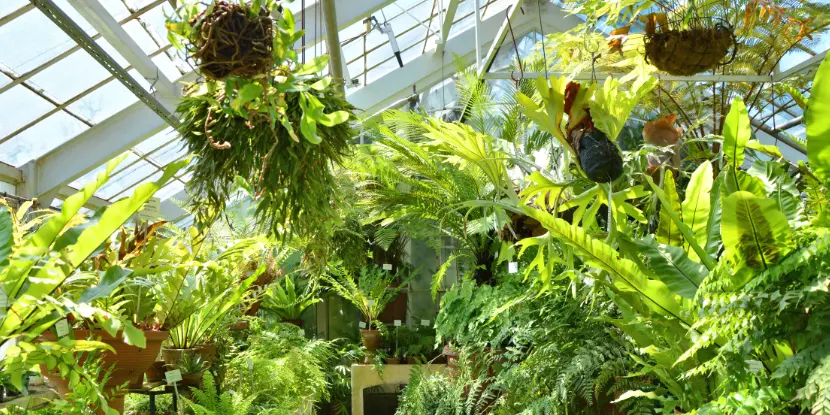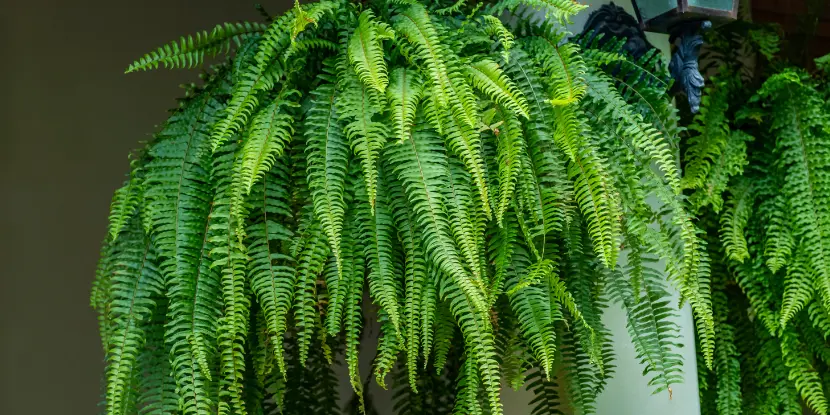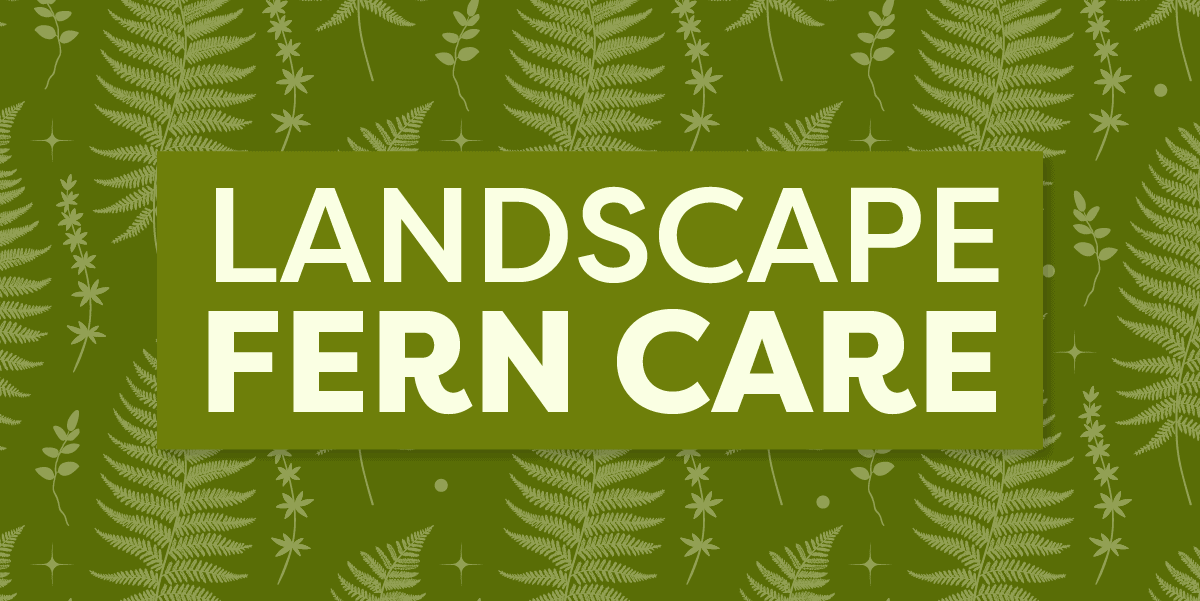Ferns offer unsurpassed variety in the home and garden. They can be grown in pots, hanging baskets, beds, and rock gardens, as specimen plants, or massed as ground covers.
Fern Growth Habit
Before planting, consider the look you want to achieve. While some ferns form clumps, others spread and make colonies. Some ferns are dainty and airy, while others are stiff and leathery. Many ferns have a reddish color when fronds are young, with a few varieties showing color in their mature fronds.

Several fern varieties growing in a greenhouse.
Exposure & Habitat
Ferns thrive in shady areas where other plants fail due to lack of light. Brooks, ponds, and low, slow-draining areas almost beg for ferns.
Take advantage of boulders and fallen logs as fern planting sites, or plant a fern or two next to a rustic bench to spruce up a favorite rest spot. Since most ferns occur naturally in cool, moist, wooded areas, try to approximate these conditions in your landscape.
Ferns seldom look their best in full sun during the height of Southern California summers. When growing ferns in full sun, be prepared to give them extra water to prevent leaf margins from burning. A cool, filtered sun or shady spot helps them retain moisture.
Soil & Planting
Soil should contain plenty of humus, peat moss, and rotted bark mulch or leaf mold. Most ferns prefer a slightly acidic soil. Adding large amounts of pine straw or pine bark will help increase soil acidity and improve porosity. For the few ferns that prefer alkaline soil, try adding dolomite lime.
Keep your fern beds well-mulched to conserve moisture and cut down on weeds. Natural mulches, like shredded leaves, pine straw, and ground bark, tend to look best, as they most closely approximate the appearance of native fern habitats.

Ferns lining a rock pathway.
Fertilizing Ferns
Organic fertilizers like manure, fish emulsion, and blood meal are preferable because they lack the salts found in chemical fertilizers. These salts build up over time, burning leaf edges or tips.
If you must use chemical fertilizers, liquids are best, but should be diluted to at least half the recommended strength. Similarly, slow-release fertilizer granules should be used sparingly.
NOTE: Never fertilize dry soil. Be sure to water ferns well before and after fertilizing.
Container Planting Your Ferns
Clump-forming ferns work best for container gardening, as they don’t try to run out of the pot, but will form nice bushy plants. Cotton burr compost provides extra peat moss and ensures adequate drainage. Containers must have a drain hole to allow excess moisture to escape.
Remember that containerized ferns will dry out more quickly than those planted in the ground. Check them frequently, especially during hot, dry summers.
Many plant lovers shy away from ferns because they’re considered hard to grow. But they’re quite easy to care for if you follow a few simple practices.
Ferns must have humidity, which is lacking in most modern homes. You can humidify your ferns by filling a saucer or tray half full with gravel and water and letting the plant pot sit on top of the gravel.
- Keep a little water in the gravel at all times.
- Don’t let the water level reach high enough to touch the bottom of the pot.
- If you place your potted fern in a decorative planter, you can stuff moist sphagnum moss between the pots to moisten when necessary.
Ferns do best in temperatures less than 72 degrees. Temperatures between 60 and 65 F are ideal. Keep ferns away from drafts.

Hanging ferns on a porch.
Watering Ferns
- Use distilled or rainwater, if possible.
- Tap water should be drawn and allowed to stand for several hours before applying.
- Don’t pour water over the foliage.
- If you water your hanging fern by immersing it in water, don’t let the water wet the foliage.
Outdoor hanging fern baskets should be in complete shade and protected from the wind. Soil should be moist at all times. Good drainage is critical.
Insects & Ferns
Try non-chemical insecticidal soaps for pest control. Follow the label directions for mixing. Consider introducing beneficial insects to keep unwanted bugs at bay.
Fertilizing Ferns
- Potted ferns should be fed monthly from March to October.
- Ferns growing in hanging baskets should be fed every two weeks.
- Use only organic fertilizers; fish emulsion is one of the best.

Ferns displayed in a naturalistic garden setting.
FAQs: Caring for Outdoor Ferns
Q: What’s the ideal location for planting ferns?
Ferns thrive in shady to partially shady locations, preferring indirect sunlight to mimic their natural under-canopy habitat. In Southern California, a north-facing garden spot that receives filtered light is ideal.
Q: How often should I water my outdoor ferns?
In the relatively dry climate of Southern California, ferns benefit from being watered two to three times a week during the hotter months. In cooler or rainy periods, reduce watering to once a week or as needed.
Q: Do ferns need special soil to grow well?
Ferns prefer rich, well-draining soil. Amending your garden soil with compost or peat moss can help achieve the right texture and nutrient balance for your ferns to thrive.
Q: Are ferns sensitive to the type of water used for irrigation?
Ferns are sensitive to chemicals often found in tap water, such as chlorine and fluoride. It’s best to use rainwater or distilled water for watering to avoid leaf burn and ensure healthier growth.
Q: What type of fertilizer should I use for outdoor ferns, and how often?
Use a balanced, slow-release fertilizer formulated for acid-loving plants, applied in early spring and again in mid-summer. Avoid over-fertilizing, which can harm ferns more than helping them.
Q: How should I protect my outdoor ferns from pests and diseases?
Regularly inspect your ferns for signs of pests like aphids and spider mites. If pests are present, use a gentle, organic insecticidal soap to treat the plants. Also, ensure good air circulation around your ferns to prevent fungal diseases.
Q: Can ferns survive Southern California winters outdoors?
Most fern varieties can tolerate mild winters in Southern California without special care. However, during unusually cold snaps, protect your ferns by covering them with frost cloth or moving potted ferns to a sheltered location.

